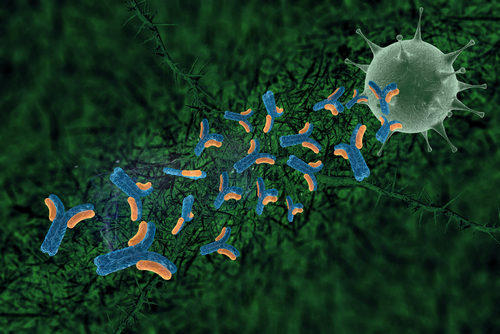Higher Th17 Cell Counts in Patients with Systemic Lupus Erythematosus Versus Healthy Controls
Written by |

 A team of researchers from Taiwan found that patients with systemic lupus erythematosus (SLE) have higher levels of T helper 17 cells than healthy controls, thus encouraging research in IL-17/IL-17R blockades as a potential treatment targets for SLE.
A team of researchers from Taiwan found that patients with systemic lupus erythematosus (SLE) have higher levels of T helper 17 cells than healthy controls, thus encouraging research in IL-17/IL-17R blockades as a potential treatment targets for SLE.
The study entitled “Increased Th17 cells in flow cytometer-sorted CD45RO-positive memory CD4 T cells from patients with systemic lupus erythematosus,” was recently published in the journal Lupus Science & Medicine.
Types of cells called CD4 T helper (Th) cells are able to differentiate from naïve status into antigen-experienced effectors with distinct characteristics, such as the interleukin 17 (IL-17)-secreting Th17 subset. These cells are implicated in several autoimmune diseases including rheumatoid arthritis, ankylosing spondylitis, psoriasis/psoriatic arthritis, Sjogren syndrome, multiple sclerosis, inflammatory bowel disease and type 1 diabetes and systemic lupus erythematosus (SLE). Studies with SLE patients revealed that these patients have increased levels of IL-17 in blood and renal tissues, and higher frequencies of Th17 cells. Th17/IL-17 dysregulation is involved in human autoimmunity, however studies measuring the peripheral blood mononuclear cells (PBMC), elevated circulating frequencies of Th17 cells reported in systemic lupus erythematosus (SLE) have shown inconsistent results regarding the correlation with disease activities.
In this regard, Ming-Fel Liu and Chrong-Reen Wang from the Section of Rheumatology and Immunology in the Department of Internal Medicine at National Cheng Kung University Hospital in Taiwan examined 48 women with a diagnosis of systemic lupus erythematosus (SLE) according to the ACR criteria. SLEDAI index was used to assess SLE activity, and the researchers analyzed other laboratory parameters including analysis of proteinuria, anti-DNA and C3/C4 concentrations, and complete blood cell counts. This SLE cohort was then compared with 48 age- and sex-matched health control individuals.
The researchers found higher frequencies of Th17 cells in SLE patients (3.51) and lupus nephritis (3.92) compared to controls (2.83), all with a positive correlation in SLEDAI. Furthermore, the results showed higher frequencies of Th17 cells in lupus nephritis. Moreover, the researchers found a positive correlation between frequencies of Th17 cells and daily proteinuria amount.
Based on the results, the researchers concluded that the increases in Th17 frequency in SLE patients, as well as the other correlations observed, indicate that targeting Th/17/IL-17 might bring therapeutic benefits in SLE patients by selectively blocking Th17/IL-17,




